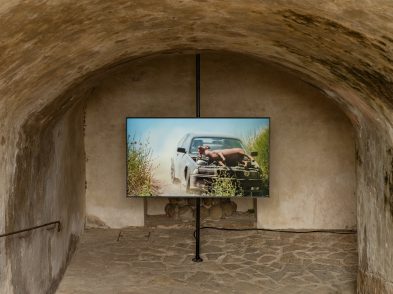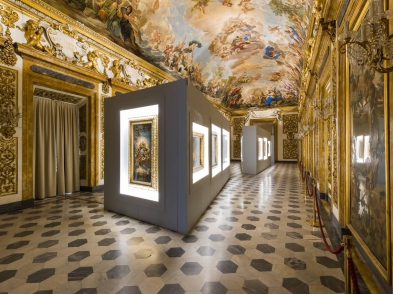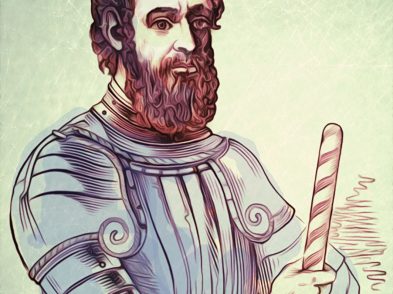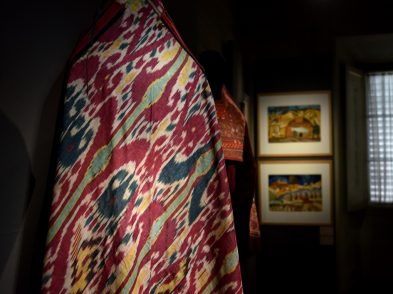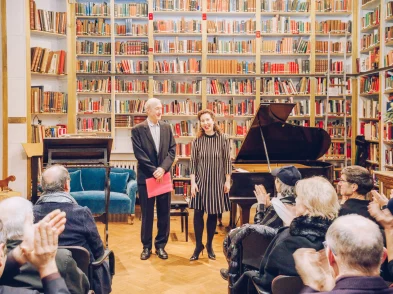The American Dream of success through thrift and hard work has taken a battering in recent decades. Diverted from the traditional path to economic independence, ‘early to bed, and early to rise, makes a man healthy, wealthy, and wise,’ as in Benjamin Franklin’s commonsense proverb, a ‘Super Size Me’ culture now strives through television game-show prizes, lottery pay-outs and compensation law suits. With the once-compelling national ethos wearing thin, American Dreamers at the Centre for Contemporary Culture Strozzina shows how, at a time of bewildering social paradox and economic complexity, 11 U.S. artists evoke present-day America through fantasy as a response to hard fact.
Mixing realism and imagination is not new to American art. In the nineteenth century, grandiose landscapes accompanied the nation’s ambitious expansion westward. After the Civil War, Albert Pinckham Ryder and Elihu Vedder painted mystical scenes and esoteric subjects. In the next century, the mix surfaced in surrealism and even touched Edward Hopper’s scenes of human estrangement and mystery despite America’s post-war prosperity and optimism. But cinema became the strongest channel by which audiences could step into worlds beyond their direct experience. Not surprisingly, the big screen stalks this exhibition without actually being present. Instead, the small scale predominates, even when the artwork is large.
Thomas Doyle funnels a Hollywood-like taste for Americana beset by catastrophe into miniature dioramas frozen into a single frame of dramatic immanence. A moment is literally suspended inside glass domes as he depicts with a model maker’s intensity clapperboard family homes teetering precariously on a precipice or sucked, still clinging to a plot of ground, out of surrounding terrain devastated by unexplained disaster. The viewer is offered an omniscient perspective, unlike the Lilliputian figures who seem unaware that calamity has transformed their drab corner of ordinariness.
No longer safe from threats of physical attack or loan foreclosure, the homefront precious to the American mind may be a powerful source for this unease. But in Adam Cvijanovic’s panoramic painting that curls around the walls of the show’s first room, the home itself is the menace. His heterogeneous landscape is a disaster movie of another dimension to Doyle’s. The vast, coherent wildernesses that inspired early American painters are here portrayed as victims of chaotic speculative building and uprooted ecologies.
The fallout from rampant consumption is a concern shared by Christy Rupp: with bones scavenged from the bins of America’s rapacious fast-food restaurant chains, she models the skeletons of extinct birds into facsimiles of museum artefacts. Kirsten Hassenfeld accords new value to waste by constructing complex star-shaped lanterns from discarded gift-wrapping.
Excess and escape are persistent themes, with one often the outcome of the other. In her photographs of women afloat in billowing drapery, Adrien Broom recalls equally the celestial drama of convoluted Baroque sculpture and the aesthetic drift into symbolic otherworldliness. As ambiguous are Will Cotton’s tinselly extravaganzas staged in pastel tones with video starlets and elaborate desserts as subjects. After photographing them, he paints details into exuberant Rococo confections that exaggerate their powdered surfaces. Their appeal lies simultaneously in material overabundance and as deserts of cultural emptiness.
More direct is Patrick Jacobs’s retreat into luminous, make-believe meadows and idealised wide horizons. Viewed exclusively through a lens set into apertures like a fairground peepshow, the intimate experience of concentrated looking is instrumental in transporting the imagination. The reward is an urbanite’s dream, a better place where nature flourishes. The sting lies in the vista’s stylised reality; it remains an image beyond actual reach.
A common feature in this show is homespun fabrication. Mandy Greer envelopes the visitor in a jungle of crafted, beaded and crocheted flora while Nick Cave’s ‘soundsuits’ are sculptures in outlandish humanoid form made from such organic and manmade materials as buttons and dyed hair. Donning these second skins (they are made to be worn), the wearer sheds inhibitions and assumes new identities through noise, shape and movement.
Indeed, Cave stands out here, offering an alternative communal experience that reignites the jaded American ideal. Elsewhere a great vision too often retreats from uncertainty into the comfort of the homemade ethic and the isolation of the hobbyist. Ultimately, this treatment is too neat and narrow to explore productively a theme whose salvation also lies in satire, humour and parody.
American Dreamers: Reality and Imagination in Contemporary American Art
Strozzina Centre for Contemporary Culture, Palazzo Strozzi, Florence
Until July 15, 2012
tel. 055/2645155 www.strozzina.org

